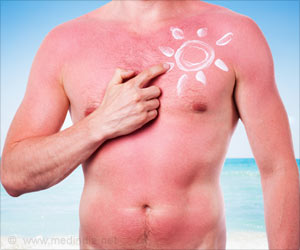according to the Global Burden of Disease Report.It has resulted in 4.3 million deaths worldwide accounting for 7.7% of the global mortality.
Generally, people from the low socio-economic background are forced to use solid fuels as these are available easily in rural areas at a lower cost.
Exposure to solid fuels is significantly associated with self-reported eye, respiratory, skin, cardiovascular symptoms, and history of adverse obstetric outcomes.
New Study
The study led by a team of international researchers from the University of Oxford and the Chinese Academy of Medical Science and Peking University, Beijing, is published in the journal PLOS Medicine.
This study examined the relationship between the type of cooking fuel used by 486,532 people and the development of eye diseases over a 10-year follow up period.
The participants of the study were asked about their cooking habits through a questionnaire. Then, their hospital admissions for major eye diseases were tracked.
Among the study participants, there were 4877 cases of conjunctiva disorders(32 percent) 13,408 cataracts (17 percent), and 1583 cases of disorders of the sclera, cornea, iris and ciliary body (DSCIC – 35 percent).
Compared with those who used clean fuels, such as electricity or gas, participants who cooked with coal or wood had these eye diseases.
Participants who switched to clean fuels had 21 percent, 5 percent, and 21 percent higher risk for conjunctiva, cataracts, and DSCIC, respectively.
“The increased risks may be caused by exposure to high levels of fine particulate matter (PM2.5) and carbon monoxide, which can damage the eye surface and cause inflammation,” said lead author Dr. Peter Ka Hung Chan, research fellow in the Nuffield Department of Population Health at Oxford.
Burning wood for cooking also increases the risk of eye injury from sparks or wood dust.
Further, there was no association between solid fuel use and the risk of glaucomabecause this disorder affects internal eye structures, which are less exposed to pollutants in the air.
These findings not only support a significant link between solid fuel use and cataracts, but also conjunctivitis and other more severe eye diseases. However, the strength of association appeared to be considerably weaker compared to that observed in previous studies.
The associations with conjunctiva disorders and DSCIC indicate that solid fuel use may have more extensive harm on eye health, which should be further investigated.
This study also highlights the global health importance of promoting universal access to clean fuels as switching to clean fuels reduced the eye disease risk.
Preventive Measures
Government and communities must take the following measures to avoid eye diseases
References:
- Use of Cooking Fuels and Cataract in a Population-Based Study: The India Eye Disease Study
– (https://pubmed.ncbi.nlm.nih.gov/27227523/) - Household cooking fuel use and its health effects among rural women in southern IndiaA cross-sectional study
– (https://journals.plos.org/plosone/article?id=10.1371/journal.pone.0231757) - Long-term solid fuel use and risks of major eye diseases in China: A population-based cohort study of 486,532 adults
– (https://journals.plos.org/plosmedicine/article?id=10.1371/journal.pmed.1003716)
Source: Medindia



